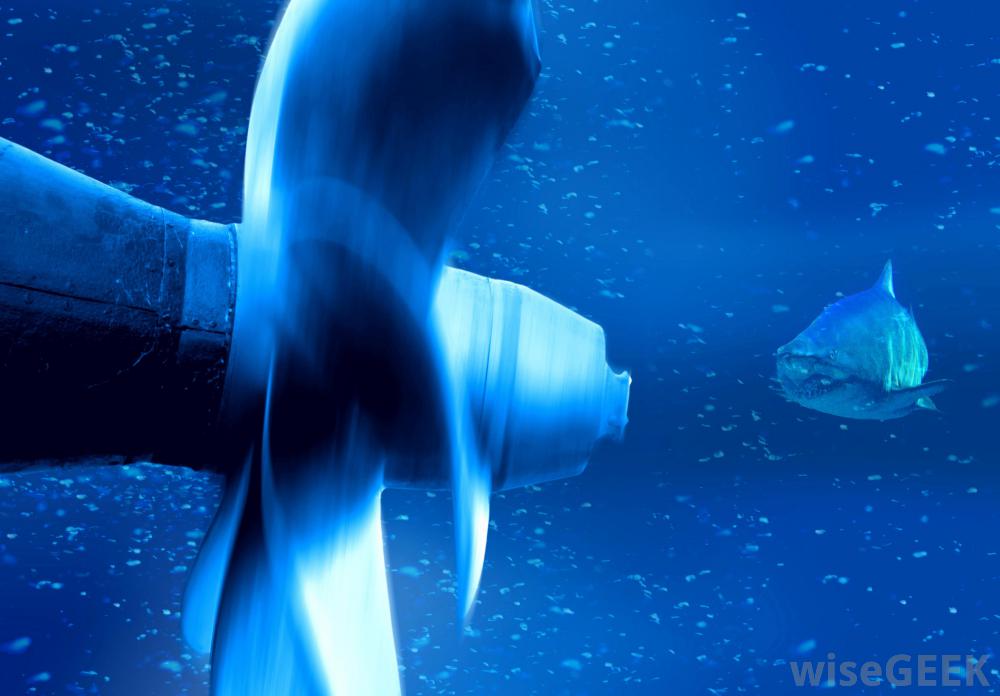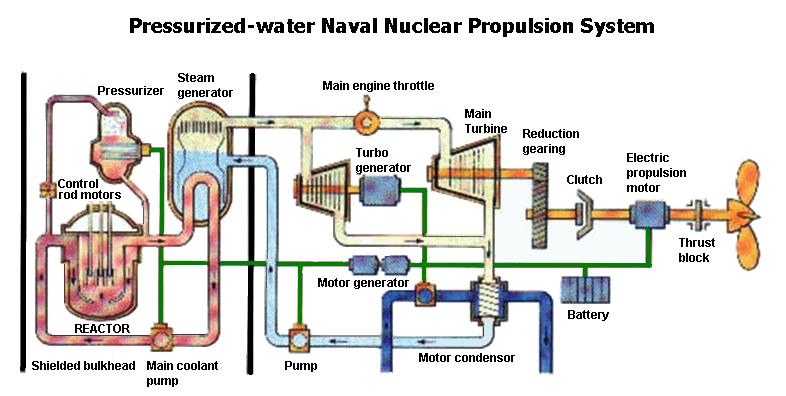Propulsion
The earliest submarine designs used human power, using oars, and later propellers run by cranks. Modern submarines are typically propelled by a single propeller, commonly called a screw. Its blades act just like a woodscrew's threading, pushing the submarine through the water as it is turned. Just as normal watercraft have for milennia, they employ rudders for steering in the horizontal plane. Since a rudder turns the boat by interacting with the moving water, a vessel must be in motion in order to turn. For vertical movement, they use hydroplanes, horizontal fins which can be angled to cause the submarine to rise or sink. Depth is largely controlled by maintaining neutral buoyancy, but there is a fair bit of freedom to maneuver without altering buoyancy.

Cavitation is a phenomenon which occurs when a liquid's pressure drops below its vapor pressure, causing bubbles of vapor to form. According to Bernoulli's equation, which relates fluid pressure and flow rate, this happens when water accelerates through a propeller. When the vapor bubbles collapse, they release sound, counterproductive for a submarine trying to stay quiet, and they can even damage the propeller blades. There is no simple solution to the problem, except to take it into consideration in engineering.
Early attempts at mechanical power were pitiful; the "Rotterdam Boat," built in 1654 by the Netherlands, boasted a spring driven paddle wheel. It was unable to move. In 1863, the French submarine "Plongeur" used compressed air to drive its propeller. Its speed, range, and maneuverability were limited.
In more recent times, submarien morors have been powered by batteries while operating underwater, and by a combustion engine on the surfact, to move the vessel and recharge the battery. Gasoline and kerosene have been used, but the less flammable diesel soon replaced them and is still in use today.
The U.S.S. Nautilus was the first nuclear submarine, built by the United States in 1954. Nuclear reactors have several advantages over diesel-electric submarines. They do not need atmospheric air to burn, and produce no gaseous exhaust. Nuclear fuel has an incredibly high output to mass ratio, so current submarines never need to refuel in their lifetime. Since air and water can be filtered and recycled, this means that the only practical limitation on how long they can stay submerged is food supply. Nuclear power is used in all large submarines, but due the considerable size and cost of a reactor, smaller submarines still use diesel-electric power.

Nuclear reactors used at sea work the same way as those used in stationary applications, but must be more robust to operate in constant, possibly strenuous motion.
Previous Next